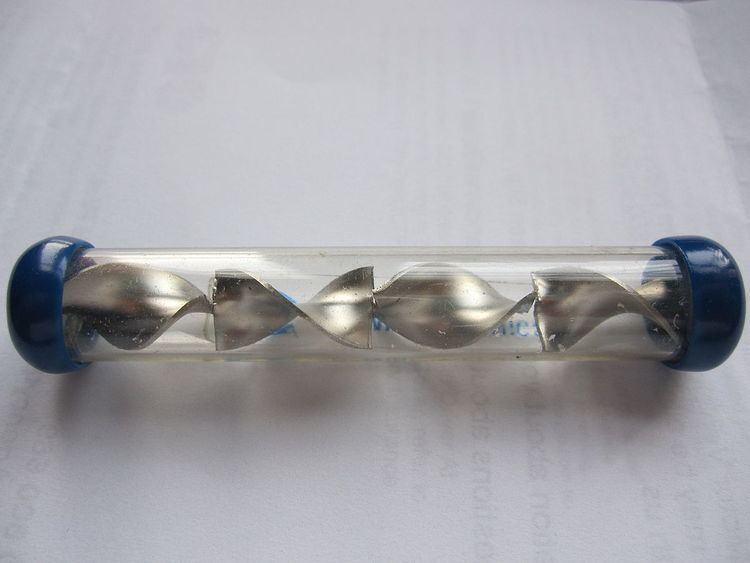Uses Mixing | ||
 | ||
Related items | ||
A static mixer is a precision engineered device for the continuous mixing of fluid materials. Normally the fluids to be mixed are liquid, but static mixers can also be used to mix gas streams, disperse gas into liquid or blend immiscible liquids. The energy needed for mixing comes from a loss in pressure as fluids flow through the static mixer. One design of static mixer is the plate-type mixer and another common device type consists of mixer elements contained in a cylindrical (tube) or squared housing. Mixer size can vary from about 6 mm to 6 meters diameter. Typical construction materials for static mixer components included stainless steel, polypropylene, Teflon, PVDF, PVC, CPVC and polyacetal.
Contents
Design
In the plate type design mixing is accomplished through intense turbulence in the flow.
In the housed-elements design the static mixer elements consist of a series of baffles made of metal or a variety of plastics. Similarly, the mixer housing can be made of metal or plastic. The housed-elements design incorporates a method for delivering two streams of fluids into the static mixer. As the streams move through the mixer, the non-moving elements continuously blend the materials. Complete mixing depends on many variables including the fluids' properties, tube inner diameter, number of elements and their design. The housed-elements mixer's fixed, typically helical elements can simultaneously produce patterns of flow division and radial mixing:
Applications
Today, static mixers are used for a wide range of different applications in many different market segments. A common application is mixing two-component adhesives (e.g., epoxy) and sealants (see Resin casting). Other applications include wastewater treatment and chemical processing. Static mixers can be used in the refinery and oil and gas markets as well, for example in bitumen processing or for desalting crude oil. In polymer production, static mixers can be used to facilitate polymerization reactions or for the admixing of liquid additives.
History
The static mixer traces its origins to an invention for a mixing device filed on Nov. 29, 1965 by the Arthur D. Little Company. This device was the housed-elements type and was licensed to the Kenics Corporation and marketed as the Kenics Motionless Mixer. Today, the Kenics brand is owned by National Oilwell Varco. The plate type static mixer patent was issued on November 24, 1998 to Robert W. Glanville of Westfall Manufacturing; however, there are also other suppliers of static mixers, Fluitec Georg AG, including Sulzer Chemtech Ltd, Verdermix, Koflo Corporation, Statiflo, KOMAX Systems Inc., and MVV srl.
